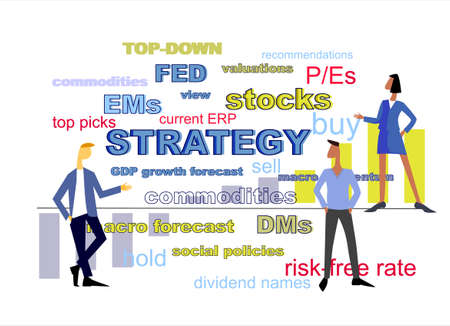What Is a High-Yield Savings Account?
If you’ve ever wondered how to make your money work a little harder for you, high-yield savings accounts might be the answer. Let’s break down what they are, how they stack up against regular savings accounts, and why so many Americans are making the switch.
Understanding High-Yield Savings Accounts
A high-yield savings account is a type of savings account that pays much more interest than a traditional savings account. These accounts are typically offered by online banks or credit unions instead of brick-and-mortar banks. Because these institutions have lower overhead costs, they can pass those savings on to you in the form of higher annual percentage yields (APYs).
How Do High-Yield Savings Accounts Differ from Traditional Savings Accounts?
| Feature | High-Yield Savings Account | Traditional Savings Account |
|---|---|---|
| Annual Percentage Yield (APY) | 1% – 5% (varies by bank and market) | 0.01% – 0.10% |
| Minimum Balance Requirements | Often low or none | Varies; sometimes higher |
| Access to Funds | Online or mobile app; usually no physical branches | In-person, online, or ATM access |
| Fees | Typically low or no monthly fees | May include maintenance or minimum balance fees |
Why Are High-Yield Savings Accounts So Popular?
The main reason people are turning to high-yield savings accounts is simple: better returns on their money without extra risk. Here’s why these accounts are gaining traction in the U.S.:
- Bigger Interest Earnings: With a higher APY, your money grows faster—even if you’re just parking your emergency fund.
- No Risk: Like traditional savings accounts, high-yield options are insured up to $250,000 per depositor by the FDIC (for banks) or NCUA (for credit unions).
- User-Friendly: Most high-yield accounts come with easy-to-use online and mobile banking tools.
- No Long-Term Commitment: Your funds remain liquid and accessible when you need them—no early withdrawal penalties like some CDs.
The Bottom Line on High-Yield Savings Accounts in Your Financial Plan
If you’re looking for a smart way to boost your savings without taking on extra risk, high-yield savings accounts offer an appealing mix of safety and higher earnings. They’re especially helpful for building an emergency fund, saving for short-term goals, or simply keeping your cash reserves growing while you focus on other investments.
2. How High-Yield Savings Accounts Work
Understanding Interest Calculation
High-yield savings accounts (HYSAs) help your money grow by paying you interest at a rate much higher than traditional savings accounts. The interest is usually compounded daily or monthly, which means you earn interest not only on your deposits but also on the interest that has already been added to your account. This process is called compounding, and it helps your savings grow faster over time.
What Does APY Mean?
APY stands for Annual Percentage Yield. Its a term youll see often when comparing high-yield savings accounts. APY shows the actual rate of return youll earn in one year, taking into account how often the interest is compounded. A higher APY means more money earned on your savings without any extra effort from you.
Interest Calculation Example
| Deposit Amount | APY | Compounding Frequency | Earnings After 1 Year |
|---|---|---|---|
| $10,000 | 4.00% | Monthly | $407.41 |
| $10,000 | 0.01% (Traditional) | Monthly | $1.00 |
This table shows how a high-yield savings account can help your money grow compared to a typical traditional savings account.
Typical Features of High-Yield Savings Accounts
- No Monthly Fees: Most HYSAs do not charge monthly maintenance fees.
- Online Access: Many high-yield accounts are offered by online banks, making it easy to manage your money from anywhere.
- FDIC Insurance: Your deposits are insured up to $250,000 per bank, per depositor.
Common Requirements You Can Expect
- Minimum Deposit: Some accounts require an initial deposit, but many let you start with as little as $1.
- Transfer Limits: Federal regulations may limit certain types of withdrawals or transfers from savings accounts to six per month.
If youre looking to maximize your savings with minimal effort, understanding how these features and requirements work will help you make the most out of a high-yield savings account.
![]()
3. Benefits of Using a High-Yield Savings Account
Earn More with Higher Interest Rates
One of the biggest perks of a high-yield savings account is the interest rate. These accounts typically offer much higher annual percentage yields (APY) compared to regular savings accounts at traditional banks. This means your money grows faster over time, helping you reach your financial goals sooner.
| Account Type | Average APY |
|---|---|
| Traditional Savings Account | 0.01% – 0.10% |
| High-Yield Savings Account | 3.00% – 5.00% |
FDIC Insurance for Peace of Mind
Most high-yield savings accounts offered by reputable U.S. banks and credit unions are insured by the Federal Deposit Insurance Corporation (FDIC) or the National Credit Union Administration (NCUA). This insurance protects your deposits up to $250,000 per depositor, per institution, in case the bank fails. Knowing your money is safe can give you peace of mind as you save.
Easy Access and Flexibility
Unlike other investment options that may tie up your funds, high-yield savings accounts allow easy access to your money when you need it. Most accounts offer online and mobile banking, making it simple to transfer funds, pay bills, or set up automatic transfers from your checking account.
Main Features at a Glance
| Feature | Description |
|---|---|
| Liquidity | Your funds are not locked in; you can withdraw at any time without penalty* |
| No Risk of Loss | Your principal is safe, unlike stocks or mutual funds that can lose value |
| Low Minimums | Many accounts have low or no minimum balance requirements to open or maintain the account |
| No Monthly Fees | Most high-yield savings accounts do not charge monthly maintenance fees if basic requirements are met |
*Note:
Certain withdrawal limits may apply due to federal regulations (such as the six-withdrawal rule), but these restrictions have been eased for many banks since 2020.
4. Factors to Consider Before Opening One
Before you open a high-yield savings account, its smart to look beyond just the interest rate. Here are some key factors U.S. savers should check to make sure youre getting the best deal for your financial needs.
Fees and Charges
Not all high-yield savings accounts are free of fees. Some banks may charge monthly maintenance fees, ATM fees, or excessive withdrawal penalties. Even small fees can eat into your earnings over time, so read the fine print before you sign up.
Common Fees to Watch Out For
| Fee Type | Description | Typical Amount |
|---|---|---|
| Monthly Maintenance Fee | A fee for simply having the account | $0–$10/month (often waived with minimum balance) |
| Excess Withdrawal Fee | Charged if you exceed allowed withdrawals per month | $5–$15 per extra transaction |
| ATM Fee | Fee for using out-of-network ATMs | $2–$5 per transaction |
Minimum Balance Requirements
Some banks require you to keep a certain amount in your account at all times. If your balance drops below that number, you might lose your higher interest rate or get hit with a fee. Make sure the minimum fits comfortably within your budget.
Withdrawal Limits and Accessibility
Savings accounts are subject to federal limits on certain types of withdrawals (up to 6 per month for most online transfers and payments). If you need frequent access to your money, check how easy it is to transfer funds and whether youll face penalties for going over the limit.
Withdrawal Limit Comparison
| Bank Type | Typical Withdrawal Limit per Month | Penalty for Exceeding Limit |
|---|---|---|
| Online Bank | 6 (by law) | $5–$15 per excess withdrawal |
| Brick-and-Mortar Bank | 6 (by law) | $5–$15 per excess withdrawal (may vary by bank) |
Online vs. Brick-and-Mortar Banks
Online banks usually offer higher rates and lower fees because they have less overhead. However, traditional banks may offer better in-person service and more ways to deposit cash. Consider whats more important for your lifestyle: convenience, customer service, or maximizing your earnings?
By weighing these factors, youll be able to pick a high-yield savings account that truly fits your financial goals and daily needs.
5. How to Integrate High-Yield Savings Accounts into Your Financial Plan
Make High-Yield Savings Accounts Work for You
High-yield savings accounts (HYSAs) are more than just a place to park your cash. They can be a key part of your overall financial plan, helping you grow your money faster while keeping it safe and accessible. Let’s look at some practical ways to use HYSAs for everyday financial goals Americans care about.
Building an Emergency Fund
Your emergency fund is your safety net for life’s surprises—think car repairs, medical bills, or sudden job loss. A HYSA is perfect for this purpose because it keeps your money liquid (easy to withdraw) and earns more interest than a regular savings account. Most experts recommend saving at least three to six months worth of living expenses in your emergency fund.
| Expense Type | Monthly Cost Example ($) | 3-Month Emergency Fund ($) | 6-Month Emergency Fund ($) |
|---|---|---|---|
| Rent/Mortgage | 1,500 | 4,500 | 9,000 |
| Utilities & Bills | 300 | 900 | 1,800 |
| Groceries | 400 | 1,200 | 2,400 |
| Total Needed in HYSA | – | 6,600 | 13,200 |
Savings for Big Purchases
If you’re planning to buy something big—like new furniture, a vacation, or a down payment on a car—a HYSA can help you reach your goal faster. The higher interest rate lets your savings grow while you take your time deciding on the purchase.
How to Set Up Your Savings Goals:
- Name Your Account: Many banks let you give nicknames to each savings account. Try “Vacation Fund” or “New Car Down Payment.” This keeps you motivated and organized.
- Set Up Automatic Transfers: Schedule a weekly or monthly transfer from checking so you don’t forget. Even $50 or $100 at a time adds up quickly with compound interest.
- Track Your Progress: Check your balance regularly and celebrate milestones along the way!
Other Financial Goals: Weddings, Home Renovations, and More
A HYSA is also great for mid-term goals that are 1-5 years away—like weddings, home renovations, or starting a small business. Since these goals aren’t immediate emergencies but not decades away either, the mix of higher returns and easy access is ideal.
Sample Timeline for Different Savings Goals:
| Savings Goal | Time Horizon (Years) | Best Account Type |
|---|---|---|
| Emergency Fund | Ongoing/Immediate Access | HYSA |
| Tropical Vacation | 1-2 Years | HYSA or Money Market Account |
| Wedding Expenses | 2-4 Years | HYSA or Short-Term CD* |
| Home Renovation Project | 3-5 Years | HYSA or Laddered CDs* |
*CD = Certificate of Deposit
Tips for Making the Most of Your HYSA Strategy:
- Avoid Withdrawals Unless Necessary: Treat your HYSA like a “do not touch” account except for its intended purpose.
- Add Windfalls: Got a tax refund or work bonus? Add it to your HYSA to boost your progress.
- Select the Right Bank: Shop around for the highest rates with no monthly fees and easy online access.
The bottom line: By using high-yield savings accounts as part of your emergency fund and other short- to mid-term savings goals, you’ll earn more interest and stay financially prepared for whatever life throws at you!

